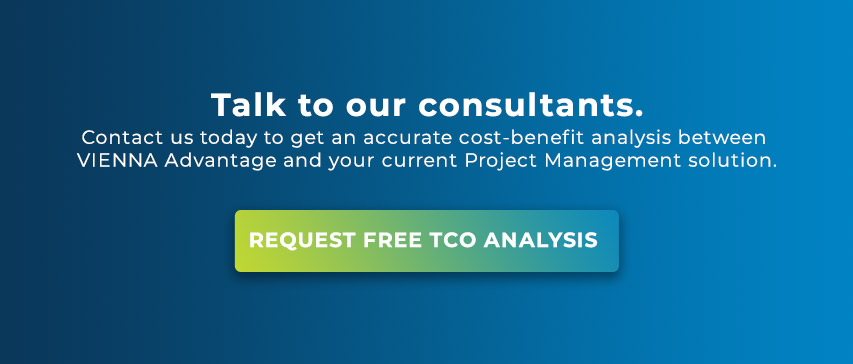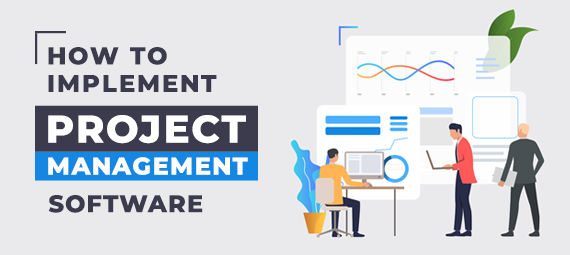Enterprise Project Management holds an important place in organizations of all sizes. Usually, project management is associated with any form of undertaking that spans a long time horizon, involves multiple stakeholders, and quite often involves a significant monetary commitment in the form of capital expenditure.
For every such activity, organizations need to monitor the project planning and execution but also have an integrated view of all project activities from all perspectives – budgeting and planning, financial accounting, asset management, and procurement. In the absence of a robust, integrated, and scalable project management solution, companies often struggle to get such a unified view.
Before we proceed to understand how an enterprise project management software should be implemented, there is one clarification that we would like to emphasize upon, and that is around the scope that users visualize from an application in this category. Project management software is associated predominantly with project scheduling and resource management applications. While these are crucial elements of a project management software, an enterprise project management application has a much broader remit, which is to integrate project activities with financial management, accounting, and procurement functions and not merely be confined to providing project execution capabilities.
With that clarified, let us examine the key requirements to implement such a process.
A brief checklist on implementing project management software
If you are at a stage where you are thinking of adopting a new enterprise project management software, what are the key activities that you should keep in mind? Here is our brief checklist that may give you a head start:
- Obtain executive approval and identify a sponsor
- Perform a cross-departmental requirements review
- Identify key users and change management champions
- Draw a preliminary project plan
- Vendor due diligence and empanelment
- Plan, execute and monitor the delivery project and change management initiative
Let us now delve into each point in detail.
#1 Obtain executive approval and identify a sponsor
As with every initiative of this scale, top management buy-in is critical. Implementing an enterprise project management application involves several stakeholders across organizational departments and without an executive sponsor to drive the initiative and resolve organizational deadlocks, the probability of the project success decreases significantly.
#2 Perform a cross-departmental requirements review
As discussed earlier in this article, enterprise project management software impacts several departments – from finance and accounting to procurement and of course, several execution teams. Before the start of the implementation, project leaders should convene cross-departmental sessions that lay the framework for the requirements of the proposed solution. These preliminary requirements will help in performing vendor due diligence as well as sensitize various stakeholders on the scope of the proposed application.

#3 Identify key users and change management champions
For every intervention of this scale, an effective change management initiative is as important as the timely implementation of a solution for the defined scope. As such, it is crucial for the project leader to identify key personnel drawn from participating departments within the organization that work as change agents and act as internal champions for the proposed solution. Such activities would also allay any user apprehensions on the impact the proposed solution would have on their day-to-day work.
#4 Draw a preliminary project plan
Every organization has ongoing activities that may have varying degrees of criticality. In order to avoid conflict of priorities and resources, the project leader should work on a preliminary project plan that details provisional start and completion dates along with an initial set of planned resources. This project plan serves as a guideline and discussion within departments to ensure the reduction of conflict between critical workstreams that may compete for the same set of resources.
#5 Vendor due diligence and empanelment
Armed with a provisional set of requirements and a project timeline, the project leader can involve the procurement team to start vendor due diligence and issue Request for Information (RFI) and Request for Proposals (RFP). The shortlisted vendors should be able to provide a suitable software solution and reliable implementation services within the scope and timelines that your project team has proposed. With these guidelines, you can select and conclude vendor empanelment, after which the implementation project can commence.
#6 Plan, execute and monitor the project delivery and change management initiative
With the vendor on-boarded and the project kicked off, standard delivery processes come into the picture. These processes involve planning the project, gathering, documenting, and getting approval on detailed requirements, configuring and customizing the solution, and proceeding with user acceptance testing, cutover, and going live with the proposed solution.
While the project delivery is crucial, and planning and executing the project would be the center of your effort, we do recommend that a few key considerations be adhered to. These are highlighted below and include important functional and technical capabilities.
- Integration with Financial Controlling and Budgeting: An enterprise project management software needs end-to-end integration with the financial control and budgeting function. Such an integration becomes crucial to ensure budget compliance, approval of capital expenditure and operational expenses against allocated project budgets, and generating profit and loss (P&L) statements at the project level.
- Integration with Asset Management: Asset procurement and management is key to certain projects, especially the ones that involve capital expenditure and fixed asset management. It is therefore important that the enterprise project management software provides native integration with a robust Asset Management module.
- Integration with Procurement: Every project involves purchasing assets, materials, resources, and consumables, and the purchase cycle needs to be tightly integrated with the enterprise project management software. Organizations may wish to track procurement by project phase or by project task and ensure budgetary controls are retained. Additionally, several large-scale projects might require vendors and suppliers to be monitored against compliance and warranties. Therefore, it is important that the enterprise project management application integrates with a Procurement module and Vendor Management module.
- Importance of In-built Document Management System (DMS): Projects involve extensive documentation – from specifications, bills of quantities, engineering drawings, and documents that provide a variety of other functions. It is therefore important for the enterprise project management software to come with a native Document Management System (DMS) where project team members can upload such documents and use them to share both internally and with external business partners such as contractors, vendors, and suppliers.
VIENNA Advantage has provided enterprise project management solutions to customers in a wide range of industries – from construction, infrastructure management companies to those in CAPEX-heavy industries such as upstream oil and gas. With our end-to-end solution, customers have been able to transition significantly complex, integrated processes to our solutions, taking giant strides in their digital transformation journeys.

Continue reading: 11 Steps to Successful Project Management
These steps will help you successfully setup and manage every project!



